
Supercharge your marine water modelling projects
Improve planning, design and operations with this feature-packed software suite that transforms model results into real-world solutions
Why MIKE 21/3?

Overcome any challenge in coastal and marine water
Hydrodynamics, waves, sediments, water quality and even ship motions – you can model it all. No other modelling suite comes close in terms of range and versatility.
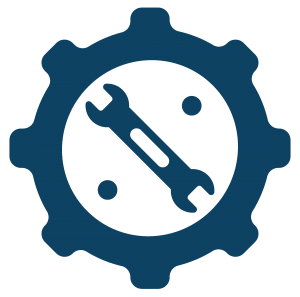
Create exactly the model you need
Pick and choose from a selection of specialised modules to create a custom modelling solution. Tackle the most complex studies by coupling MIKE 21/3 with other MIKE Powered by DHI applications.

Produce high quality work in less time
Boost productivity with superior modelling tools and easy data access. Run faster simulations with advanced parallelisation techniques for multi-core and GPU modelling.
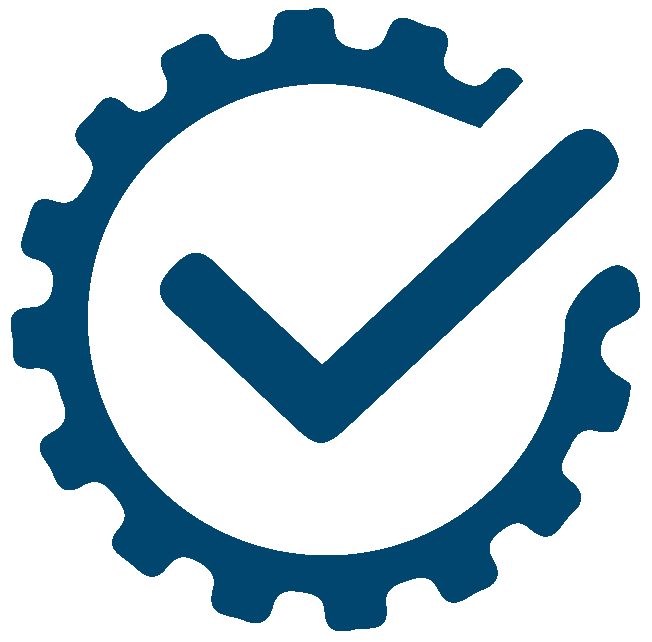
Achieve undisputed accuracy
When quality matters most, count on MIKE. Have full confidence in your modelling results – thanks to the world's leading, science-based software developed by professionals, for professionals.
First, get started with these integrated core modules
Preprocessing & Postprocessing
-
- Generate boundary conditions quickly and easily
- Create and edit 2D/3D grids and detailed computational meshes
- Animate results in Google Earth and create amazing 3D video presentations
- Speed up model creation with easy access to digital bathymetric data
- Boost productivity with sensitivity analysis and auto-calibration features
- Benefit from an endless series of efficient analysis and visualisation tools
- Easily access your MIKE 21/3 data in MATLAB, Python, QGIS and other programming languages. See here
Hydrodynamics
-
- Simulate unsteady flow taking into account bathymetric, density variations, point sources and external forcing
- Conduct flooding simulations, including tsunamis
- Assess hydrographic conditions in stratified and non-stratified waters
- Seamlessly represent storm surge caused by wind and pressure
- Simulate the dynamic effects of wave-induced currents, tide and weather conditions
- Use with other MIKE 21/3 modules to study spreading, water quality or morphological processes
Transport
-
- Describe the temperature, salinity and density of substances subject to linear decay and heat dissipation
- Analyse complex discharges via connected source-sink dynamics to understand re-circulation or variations in habitat quality
- Easily screen for potential water quality concerns by identifying zones of accumulation and poor flushing using multiple tracers
- Integrate with MIKE ECO Lab to model complex ecological phenonmena such as eutrophication, detailed fate modelling of coliform bacteria as well as xenobiotic and heavy metal compounds
Next, choose from a range of specialised modules
Ecological & water quality modelling

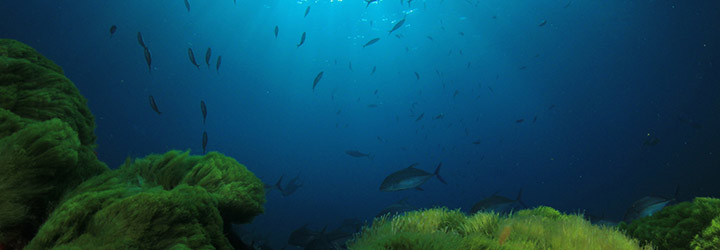

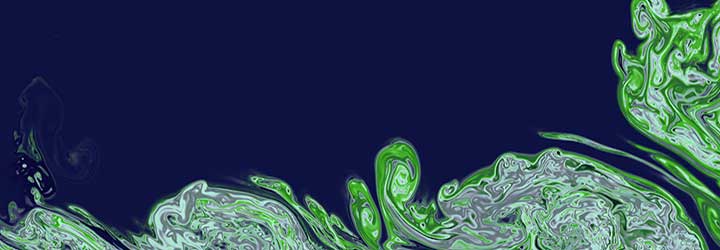
Sediment transport & morphological modelling




Wave modelling & dynamic mooring analysis
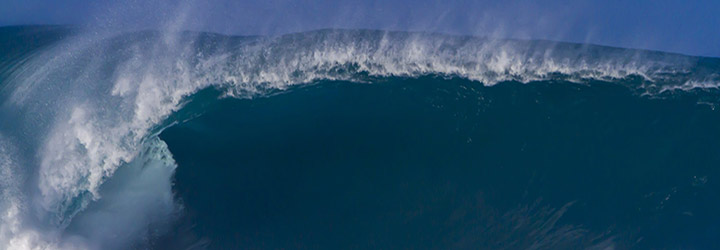


No in-house modellers?
Discover why thousands of professionals, scientists and researchers in more than 100 countries count on MIKE 21/3.
- Oleg Mouraenko, Senior Modelling Scientist
Moffat & Nichol (USA)
'MIKE Zero and MIKE 21 were instrumental in the design, development and testing of the artificial reef. The interface was a pleasure to deal with and pre and post processing excellent. I remain a die-hard fan of MIKE 21 (and DHI), and look forward to the next project (which cannot come soon enough).'
- Dr. Alfredo Torruella, President
Fundacion legado Azul (Puerto Rico)
'Having used in-house numerical modelling codes before with limited user interface, I really appreciate the user-friendliness of the DHI software suite. It is clear these tools have been developed to help maximize the time spent on interpreting the modelled processes as opposed to how the run the software and correct bugs.'
- Vincent Leys, Coastal Engineer
CBCL Limited - Consulting Engineers (Canada)
'We have been working with the MIKE 21/3 model suite since early 2006. Over the years, many of our researchers and graduate students have taken advantage of these cutting edge models to resolve the complex hydrodynamic and sediment transport problems pertaining to their research projects.'
- Felix Jose Ph.D, Associate Professor
Florida Gulf Coast University (USA)
'I have used the MIKE 21/3 system for my academic and contractual oceanography research for about 25 years. This loyalty to DHI is motivated by the ''personal and friendly relation'' I have enjoyed with DHI staff and the advanced scientific knowledge base contained in the various MIKE 21/3 environmental coastal zone modules.'
- Prof. Vladimir Koutitonsky, Senior Scientist - Owner
Hydrosoft SA (Canada)
'The Greater Vancouver Regional District (GVRD) has been using MIKE 3 FM software to develop an in-house Hydrodynamic & Transport model. We are impressed with the diversity and sophistication of this software.'
- Shaheli Masoom, Senior Project Engineer
The Greater Vancouver Regional District (Canada)
Learn how easy it is to create and run MIKE 21/3 models

SELF-PACED COURSE
Dive into Data Processing and Visualisation with MIKE Zero
- Format time series
- Select time series attributes e.g. time type, value type, item type and item unit
- Apply your knowledge of spatial data, projection and coordinate systems
- Import time series data into MIKE native formats
Available anytime | Register

SELF-PACED COURSE
Getting Started with 2D Hydrodynamic Modelling
- Set up MIKE 21 Flow Model FM
- Apply forcing e.g. wind or boundary conditions
- Change physical parameters e.g. bed roughness and viscosity
- Generate and evaluate model outputs
Available anytime | Register

SELF-PACED COURSE
Getting Started with 3D Hydrodynamic Modelling
- Set up MIKE 3 Flow Model FM
- Apply forcing e.g. wind or boundary conditions
- Change physical parameters e.g. bed roughness and dispersion coefficients
- Activate the temperature and salinity model including heat exchange
- Generate and evaluate model results
Available anytime | Register
Additional capabilities & unique features
The latest improvements encompass enhanced stability for both higher order and low order schemes, particularly in regions involving flooding and drying, with notable advantages for three-dimensional simulations. The fast low order scheme has undergone substantial enhancements in accuracy and stability, especially in areas with steep gradients. Consequently, velocities along riverbanks and underwater channels now exhibit better alignment with the more accurate higher order scheme. Furthermore, the performance of GPU solvers has been optimised for simulations that incorporate infrastructure features and flow-dependent bed resistance.
The accuracy of our advection-dispersion scheme has been improved with an upgraded discretisation of the diffusion terms.
Coastal and marine modellers – run faster, more accurate FM simulations in more applications given MIKE 21/3’s improved numerics in MIKE 2023. Plus, avoid freak (unnatural) velocities and numerical noise, particularly when modelling steep gradients such as riverbanks and shelf seas.
The new and improved MIKE 21/3 FM suite as part of MIKE 2023, opens the door to more modelling possibilities and streamlined workflows. Users can now calculate excess temperature in desalination plants, more accurately assess flooding with an H4Inundation output on line series and even run degree-based map projections thanks to the removal of LONG/LAT dependency in the FM engine(s). With these latest improvements, you’ll experience faster GPU acceleration, particularly during the initialisation phase for shapefiles that include thousands of polygons.
Save time and improve your modelling workflows using MIKE Zero’s upgraded editors and viewers. Take advantage of new keyboard shortcuts and themes, improved tabbing, tear off and cascade functionality plus easier access to User Guides and Scientific Documentation.
Salt marsh and mangrove vegetation, which cover ~19% of our global coastline, are paramount in helping to reduce climate change-related risks along the coastline. Particularly when used in combination with other natural or man-made coastal defences, belts of coastal vegetation can help reduce damage and associated costs from waves, intense storms, tsunamis, erosion and sea-level rise.
To better support coastal zone management planning and coastal defence initiatives, MIKE 21 Flow Model FM, MIKE 3 Flow Model FM and MIKE 3 Wave FM models can now be used for a variety of vegetation – from rigid plants like mangroves to flexible plants such as salt marsh cover. In addition, MIKE 21 Spectral Wave FM also includes two new dissipation models for rigid plants: a multi-layered approach for the fully spectral formulation and directionally decoupled parametric formulation and a single-layered approach for the fully spectral formulation.
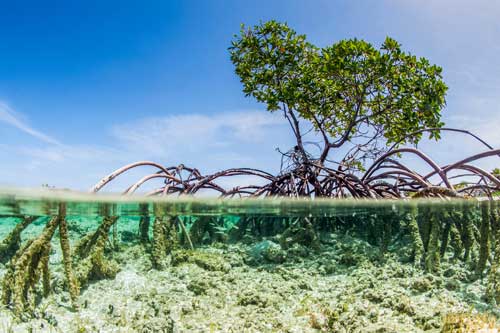
MIKE Zero, DHI’s fully Windows integrated graphical user interface, is now better than ever and comes standard in all MIKE 21/3 software! Enjoy easy access to new MIKE Cloud applications and Cloud-enhanced functionality, plus an extended set of MIKE tools within theme-based (rather than product-based) interactive workflows. Ensure important model components such as sources and structures stay at the forefront with a new interactive, customisable floating mapping window. Lastly, the updated tabbing functionality will help you work in a more organised and efficient manner.
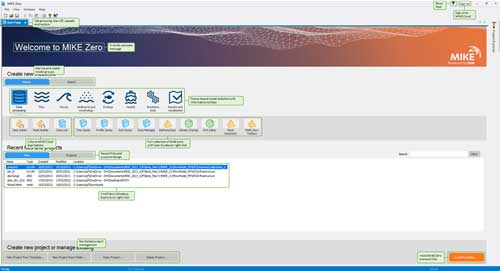
MIKE 3 Flow Model FM users now have access to a k-Omega turbulence model with wall functions to model vortices and vortex shedding around vertical structures such as slender piles. When coupled with a MIKE 21/3 Mud Transport or a MIKE 21/3 Sand Transport model, you can more accurately predict scour around structures. Watch video
You can now access MIKE 21/3 on Azure Marketplace, where you can start modelling in the cloud with no hardware limitation in four simple steps. Learn more
Need to analyse problems where flow and transport phenomena are important and where the flexibility inherited in the unstructured meshes can be utilised? Look no further than MIKE 21/3 Coupled Model FM. With this truly dynamic modelling system, you’ll have the power to investigate the morphological evolution of nearshore bathymetry impacted by factors such as dredging works and engineering structures, including breakwaters, groins, shoreface nourishment and harbours. Explore all capabilities
Use MIKE 21/3 Coupled Model FM to:
-
-
-
- Dynamically couple waves and currents
- Get full feedback of bed level changes on waves and currents
- Easily switch between 2D and 3D calculations (hydrodynamic module and process modules)
- Achieve flexibility in describing bathymetry, ambient flow and wave conditions using depth-adaptive and boundary-fitted unstructured mesh
-
-
Set up simulations, perform pre- and post-processing analysis, and present and visualise results with MIKE Zero, our fully Windows integrated graphical user interface embedded in MIKE 21/3. With MIKE Zero, you can better control and organise information for nearly all kinds of engineering studies including model simulations. Streamline your work with access to a wide range of informative and helpful features. Learn more
MIKE 21/3 takes advantage of the efficient parallelisation techniques for the use of multiple cores and GPUs. Special techniques have also been developed to enhance calculation speed within the morphological modelling. Learn more
Regardless of how efficient your modelling is, clear communication of results is crucial to its value and recognition. With MIKE 21/3, you can:
-
-
-
- Create time series, line series and 2D/3D data plots
- Display flexible mesh model data
- Visualise cross-sections, individual particles and tracks
- Enhance your models with detailed digital bathymetries
- Animate gridded and unstructured results in Google Earth
- Create realistic 3D scenes, including buildings, ships or other solids, visualise waves in 3D, produce professional fly-through animations and more with MIKE Animator Plus – included in all subscription packages.
-
-
Take advantage of the built-in Mesh Generator Tool to generate and handle unstructured meshes more efficiently. Automatically create high quality boundary conditions in minutes using Boundary Conditions Generator – a free premium feature for customers with a Service and Maintenance Agreement (SMA).
MIKE 21/3 enables you to model the effect of structures using a subgrid technique and you can include six different types of structures in your simulations:
-
-
-
- Weirs
- Culverts
- Dikes
- Gates
- Piers
- Turbines
-
You also have the option to include composite structures by combining a weir and one or more culverts.
-
Get the most value from your software and reduce project risk with a variety of training options and technical support.
-
-
-
-
- Get instant answers through the integrated Online Help System that provides context-sensitive support for every property, dialog and editor
- Learn at your own pace with self-paced training courses
- Join one of our instructor-led online courses
- Take advantage of customised in-house training to get your projects moving faster
- Receive a response from technically competent Help Desk staff
- Access a library of Frequently Asked Questions
-
-
-
The computational engines of MIKE 21/3 are also available on Linux operating systems taking advantage of access to 100’s of CPU’s. Learn more
